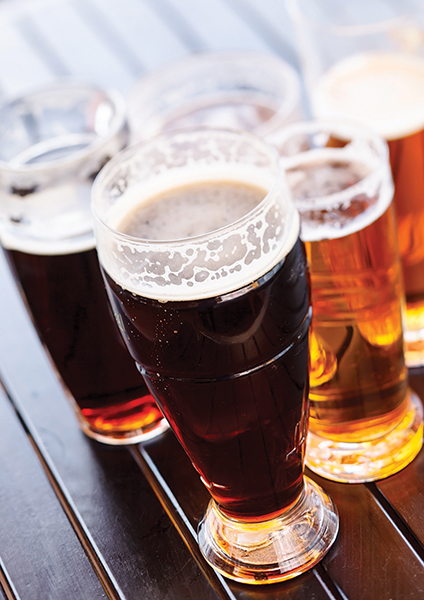
By Jack Kenny
Beer doesn’t last forever, and most beer doesn’t even last for a year. Why is that? Most beer is pasteurized, but that process doesn’t mean that organic changes are nullified. Over time, beer will suffer from exposure to light, to heat and temperature swings, and the ingredients within the container will undergo chemical alterations that will permanently change the aroma, taste, body and overall character of the beverage.
Beer is perishable, plain and simple. Commercial lager beers are good for up to four months before they start to oxidize. Hoppy beers are particularly prone to change because the hop character breaks down at a relatively quick pace. I’ve seen people refuse to buy a sixpack of IPA whose born-on date was older than one month. That’s a bit extreme, but folks with trained palates certainly can detect variations in freshness levels.
Dark, cool and still. Those are the ideal conditions for beer.
Light is the number one enemy of beer. Light begins acting on beer immediately. Brown glass filters out about 95 percent of the UV rays in light, but green and clear glass are open invitations for light to work its rough magic on beer. (One wonders why clear and green glass are used at all.) What happens is that light plays around with a flavor compound in beer called 3-MBT, resulting in a skunky aroma. If you smell sulfur, that’s because sulfur is involved in that chemical change.
Keep beer cool for best results. That’s not always possible, obviously, at off-premise retail stores. Next best is to keep it cool or at a stable temperature; in other words, avoid swings in degrees. And finally, try not to move it around too much.
Beers that are malty and high in alcohol strength – or which are not pasteurized and continue to condition themselves within the bottle – can remain viable for years, up to five or more in some cases. The catch, however, is that they must be cellared (dark, cool and still). A great beer, such as a Belgian tripel, a Russian imperial stout, a barleywine or a lambic, will not age well sitting on a store shelf for three years. But, keep it in a special place where the ideal conditions can be applied, and you have yourself a product that will mature over time and deliver rewarding taste experiences to the consumer.
The process of cellaring is difficult for off-premise retailers, of course, unless they have a serious affection for high-end beers and wish to offer knowledgeable customers a special treat. Some on-premise establishments that are dedicated to craft and specialty beers have capitalized on their storage space and have cellared many different brews. One good example is The Ginger Man in South Norwalk, which has a special room in its large cellar for bottles and kegs to age. They keep kegs of Dogfish Head 120 Minute IPA from several different years. (Unlike other IPAs, Dogfish 120 is probably best considered to be an extreme barleywine with lots of hops. It clocks in at around 18 percent ABV and doesn’t taste like any other beer.)
If you are tempted to cellar beer, here are some points to consider:
- Have patience.
- Set aside several bottles of the same beer, preferably three or more.
- Keep records: Create a record book. Put a tag on each bottle and write the date.
- No light. Period.
- Temperature: 55°F is ideal, with a variable of 5° in either direction. A rule of thumb is that the best cellar temp is the same as its ideal serving temperature. Barleywines, imperials and tripels are best served at 55° to 60°, and stouts and other ales between 50° and 55°. Anything lighter probably should not be cellared.
- Humidity: Between 50% and 70% is best. If humidity is low, corks can dry. If humidity is high, you’re inviting molds, particularly black mold, which you do not want. Invest in a humidifier/dehumidifier to control moisture. Standard refrigerators are not recommended for long-term beer storage because they are designed to keep contents dry.
- Store bottles upright. Vertical storage reduces the amount of exposed liquid surface area, lowering the potential for oxidation. Horizontal storage creates a yeast ring on the side of the bottle. Also, the alcohol in beer could draw out unwanted flavors from corks if the bottle is shelved horizontally.
Jack Kenny has been writing The Beer Column for The Beverage Journal since 1995. Write to him at thebeercolumn@gmail.com.




